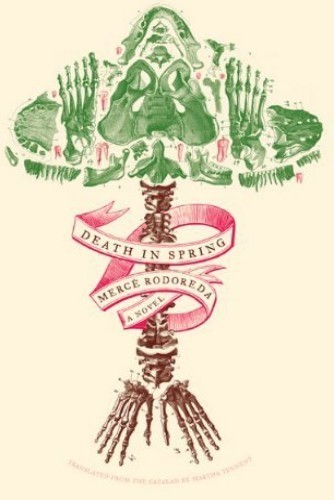
Death in Spring
- اطلاعات
- نقد و بررسی
- دیدگاه کاربران
نقد و بررسی

March 23, 2009
Exiled after the Spanish Civil War, Rodoreda (1908–1993) worked on this marvelously disturbing novel over a 20-year period, and its first publication was posthumous. As macabre as a Grimm fairy tale, the novel portrays the cruel customs of an unnamed village as seen through the eyes of an unnamed 14-year-old boy. The narrator witnesses his father’s horrible death, which, it becomes clear as the story progresses, happens according to local custom: to pour cement into the mouths of the dying in order to seal their souls within their bodies, then entomb them within a hollowed tree. The narrator also spends a good deal of time with the village prisoner, who for years has been confined to a too-small cage and now is only too happy to explain the bizarre village goings-on to the narrator and his friend, the son of the blacksmith who runs the town. The plot, though anemic, has its share of increasingly perverse twists, and the intense lyricism of Rodoreda’s language, captured here by Tennent’s gorgeous translation, makes her grotesque vision intoxicating and haunting.

April 15, 2009
Rodoreda (190883), arguably the most outstanding 20th century Catalan writer, has remained until recently largely unrecognized in Spain, despite the wide recognition of her most famous work, "The Time of the Doves" (1980). "Death in Spring", left posthumously incomplete and not published until 1986, is considered by some critics her best work. Set in a mythical village, the story is narrated in its first half by a 14-year-old misfit who, after witnessing the burial of his father in a tree with his mouth cemented, spends his days wandering the cemetery and countryside accompanied by his barely older stepmother. The second half advances to his adulthood as the narrator relates the stoning of his daughter and his own ritualistic death. This bare-bones plot advances at a highly symbolic level in an oneiric, hallucinatory text. Populated by many deformed outcasts who participate in and are victims of cruel and superficially absurd sacrificial rituals, this novelistic world transcends time and place to present a cruel and incomprehensible universe whose inhabitants are obsessed with the omnipresence of death; the symbolic allegory has possible political overtones. Best for committed readers of fiction in translation.Lawrence Olszewski, OCLC Lib., Dublin, OH
Copyright 2009 Library Journal, LLC Used with permission.




دیدگاه کاربران